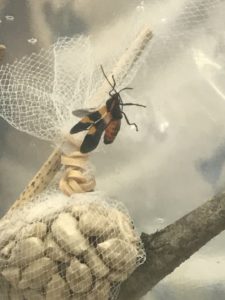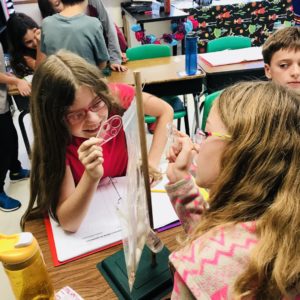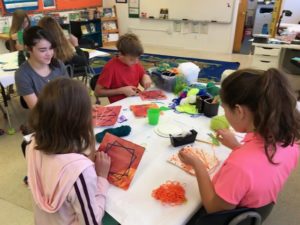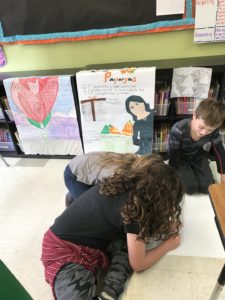La Lectura
• Identify key characteristics of expository texts and different sources of media.
• Determine importance (main idea/supporting details) of the information presented for reading comprehension.
• Cite relevant evidence from the text to explain thinking, both in oral and written form.
• Analyze text, craft and structure of and interview.
• Integrate knowledge and ideas and make text-to-text connections.
• Correctly use the written accent according to the tonic accent in words at the grade level applying a systematic analysis. Palabras esdrujulas
• Read grade level poetry and prose orally with accuracy, appropriate rhythm and expression in progressive readings.
Students did a great job this week during our book club, Esperanza renace. Next Monday, they need to be ready to discuss: Las almendras, Las ciruelas y Las papas.
Ciencias
 For several weeks students will observe and record events in the milkweed-bug habitats. Students should observe feeding and drinking, movement, mating, egg laying, hatching, and molting. After 8 weeks students should observe the completion of the milkweed-bug life cycle and see a multitude of offspring.
For several weeks students will observe and record events in the milkweed-bug habitats. Students should observe feeding and drinking, movement, mating, egg laying, hatching, and molting. After 8 weeks students should observe the completion of the milkweed-bug life cycle and see a multitude of offspring.
We continued the week developing answers for the following focus question: What are the defining characteristics of an individual, population, community, and ecosystem? Students used ecosystem sorting cards to reflect on organizing concepts in ecology and develop the vocabulary associated with those concepts. They were introduced to basic definitions used in ecological studies such as individual, population, community, ecosystem, and biotic/abiotic factors. They worked in groups to sort the picture cards into categories based on the definitions. Next week, we will be discussing the sorting activity and students will record their sorting results on a sheet.
• Observe milkweed bugs. Monitor changes that yield information about their life cycle and reproduction.
• Analyze and sort images on cards to determine which represent individuals, populations, communities, and ecosystems.
• Identify biotic and abiotic elements in an ecosystem.
• Accurately apply scientific terminology and vocabulary in oral and written form.
Mathematics
This week we began learning about Negative Numbers and the Number Line. Our objectives were:
- use negative numbers to represent real-world quantities
- represent, compare, and order positive and negative numbers on a number line
- understand the absolute value of a number as its distance from 0 on the number line
- interpret absolute value as magnitude for a positive or negative quantity in a real-world situation
Our test for Chapter 2 is on Monday!
History & Geography
This week we continued to learn about Ancient Greece and Rome. Our objectives were:
- understand aspects of Athenian democracy
- describe rights of citizens, women, slaves, and metics
- recognize the importance of education to Athenians
- understand the Spartan emphasis on military training, bravery, and warrior culture
- explain the Spartan system of government
- recognize some of the important differences between Athens and Sparta
English Writing & Spelling
Our objectives for writing were:
- explain the steps of the Writing Process and elements of narrative writing
- begin writing a Narrative piece by choosing a plot and theme
- continue pre-writing by understanding task, purpose, and audience
- create a graphic organizer that will guide the plot of our writing
Our Greek and Latin roots this week were:
- centr, center: middle
- chron, temp: time
- cid, cis: to cut or kill
- circ, circum: around
Our next Greek and Latin roots quiz will be on October 15th!
 Specialists
Specialists
The 5th and 6th grade students finished their wonderful Yarn Stitchery projects which are on display on the bulletin boards at the end of the hallway. They did a great job combining painted texture with the strong linear designs of the yarn. I always wish we had more time to explore these projects further! This month the students will work on a 3 dimensional paper mâché’ Grecian Vase to go along with their social studies unit. And we’ll also learn some new techniques to create a Still Life of autumn produce from Tamra’s family garden. Many thanks to Barbara for helping out in the 5th/6th grade art class!

